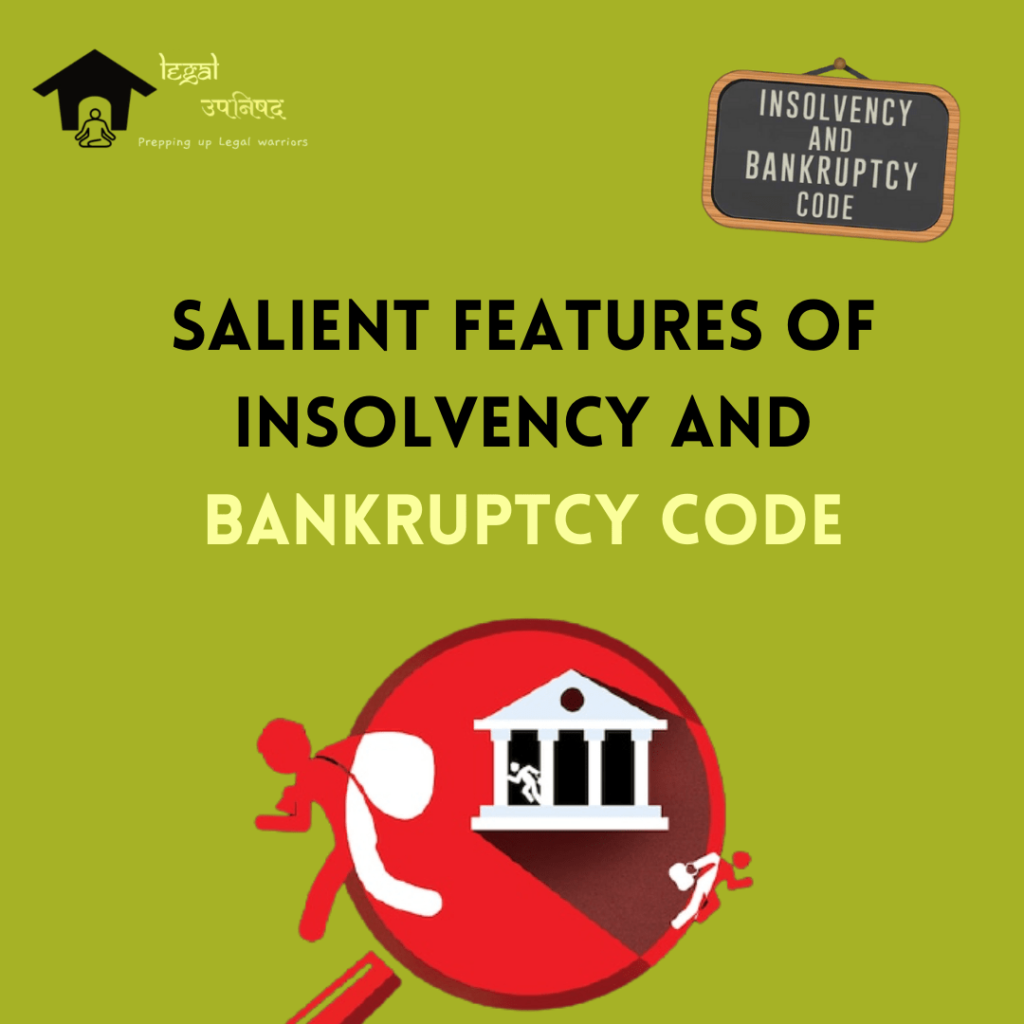This article on ‘Salient Features of Insolvency and Bankruptcy Code, 2016‘ is written by an intern at Legal Upanishad.
Introduction
After the 2008 world crisis, economies were flushed with capital, and many companies were given loans without considering their fundamentals these loans later turned into Non-performing assets, and to fight against rising NPAs, the Insolvency and Bankruptcy Code (IBC) came into. It provides a time limit to resolve insolvency in companies. Insolvency means when a person is unable to pay back the loan he took. And Bankruptcy means when a court declares a person insolvent. In this article, we will discuss why Insolvency and Bankruptcy code was needed and what are its salient features. In the end, we will have a look at the challenges IBC is facing.
Objectives
The very first objective of the Insolvency and Bankruptcy Code was to consolidate and compile all the pre-existing laws under the umbrella of IPC so that process of insolvency gets expedited. All the big banks or creditors were facing the problem of fund crunch this act acted as problem-solving for them as the time-limited frame made the system efficient. This act also established a new body named the Insolvency and Bankruptcy Board of India which will look after the implementation of this code.
Insolvency and Bankruptcy Code covers all companies including private limited and partnership firms. Insolvency and Bankruptcy code provides for two types of authorities to decide upon the insolvency of a company.
- National Company Law Tribunal (NCLT) – It is for companies and Limited liability partnerships.
- Debt recovery tribunal – It is for individual and partnership firms.
Process of initiating Insolvency Process
This process can be taken up by any shareholder of the firm. It means any person who has a stake in the company like debtor/creditor/employee can move to NCLT to initiate the process of insolvency. The maximum time frame given to the tribunal to decide upon it is 14 days. If the tribunal approves then an Insolvency Resolution Professional (IP) is appointed.
After this, the firm loses its power over the administration of the firm and the rights of companies get transferred to the Committee of Creditors (CoC). It is in the hands of IP whether to revive the company or liquidate it. If they decide to revive then they need to look for interested parties willing to buy the firm through bidding. The strict time frame defined by the act to complete this process is 180 days with an extension of 90 days.
Achievements of IBC
According to data made public by NITI Aayog from 2016 to 2020, approximately 250 companies were rescued and 1000 were referred for liquidation. According to the Insolvency Bankruptcy Board of India, almost 191% of value was yielded through insolvency resolution. This is a remarkable achievement under the IBC regime.
Under the IBC regime so far recoveries have also increased from 22% in 2016 to 54% in 2020. And now due to strict rules, many companies are paying dues on time before the tribunal declares them insolvent and now many of the cases get disposed of even before reaching the National company law tribunal.
Before Insolvency and Bankruptcy Code cases used to take more than 4-5 years to resolve and then also it was not sure that case would end in the favor of creditors. Now due to the Insolvency and Bankruptcy code resolution process has been come down to 317 days.
Challenges
The process is painstaking as it involves several stakeholders and the complex process makes it difficult to understand. According to NITI Aayog, many people are still not aware of Insolvency and Bankruptcy code.
The undefined powers given to a committee of creditors undermine the resolution process. The need of the hour is to come up with more transparency in this process and NCLT should be given more structural powers.
Many of the NCLT benches are not operational and it makes the process of insolvency is difficult to dispense at an early stage and drags the whole process beyond the set time limit which is undermining the whole purpose of this act.
The low approval rate of resolution plans: According to the data from the Insolvency and Bankruptcy Board of India (IBBI), of the 2,542 corporate insolvency cases filed between December 1, 2016, and September 30, 2019, about 156 have ended in approval of resolution plans — a mere 15%.
Conclusion
Insolvency and Bankruptcy Code is a very important reform as done with time and to maintain its work and implement it effectively there is a need to make everyone aware of its process. It can perform tremendously in developing countries like India as this code will boost the confidence of foreign investors to invest in India and it will increase the rank of India in ease of doing business ranking as it’s been already done now India stands at 63rd place in the world.
As with time new matters come up and to solve them amendments can be made in code so that their importance doesn’t fade over time. This act will prove a boon by creating a database of defaulters and initiating insolvency proceedings against them.
References
(Investopedia)
(https://cleartax.in/s/insolvency-and-bankruptcy-code-2016)
(https://www.mca.gov.in/Ministry/pdf/TheInsolvencyandBankruptcyofIndia.pdf)

